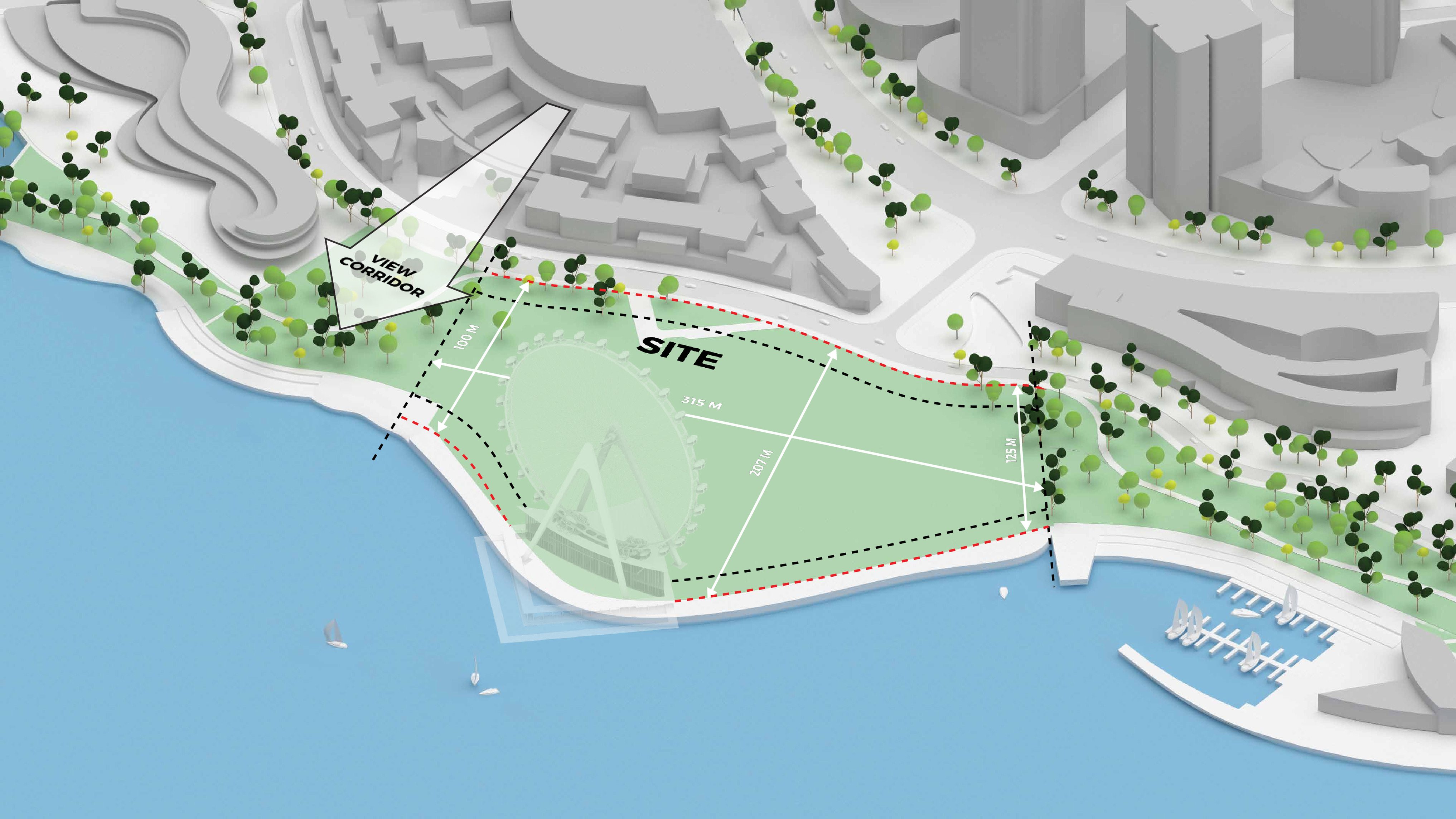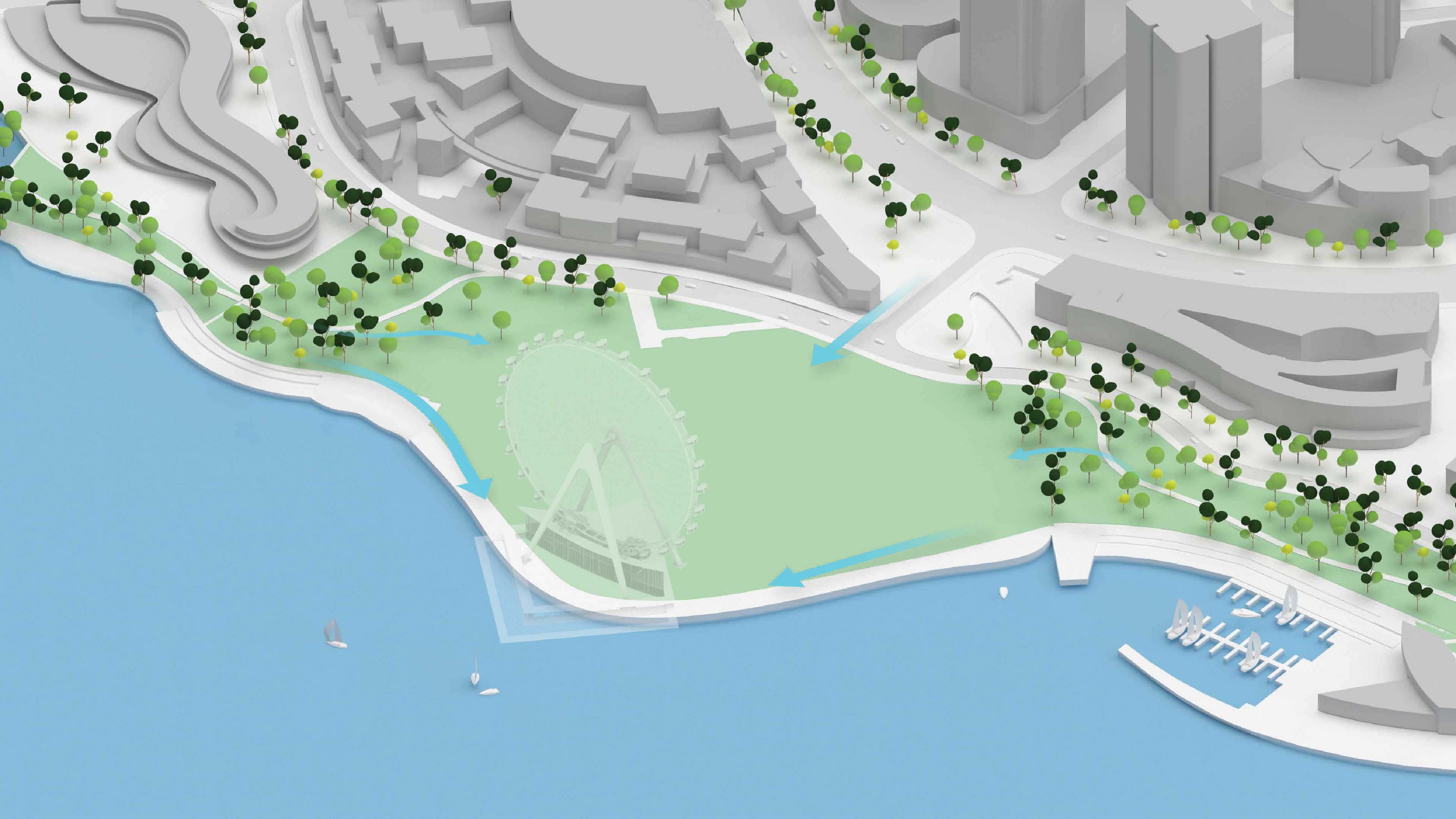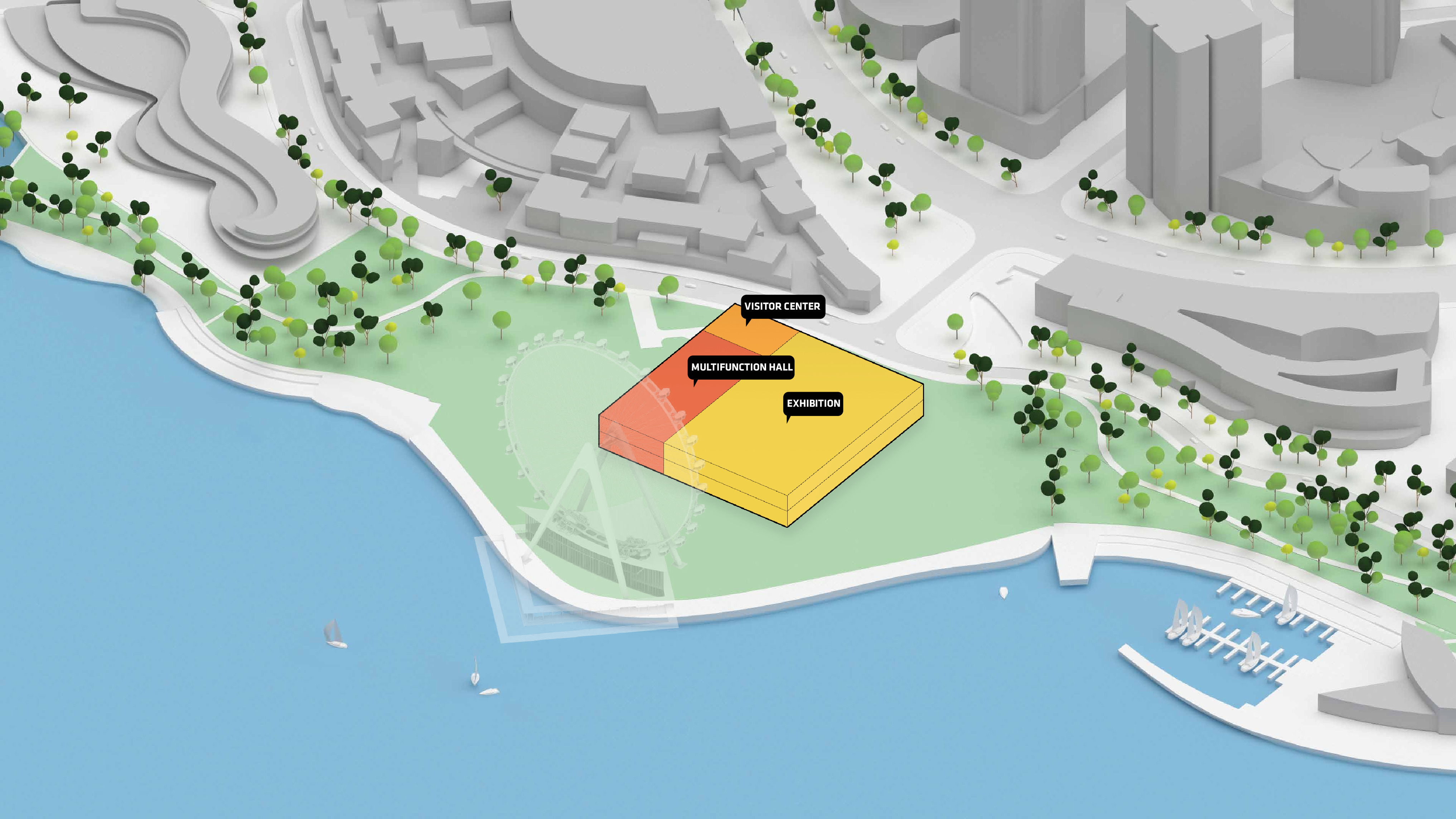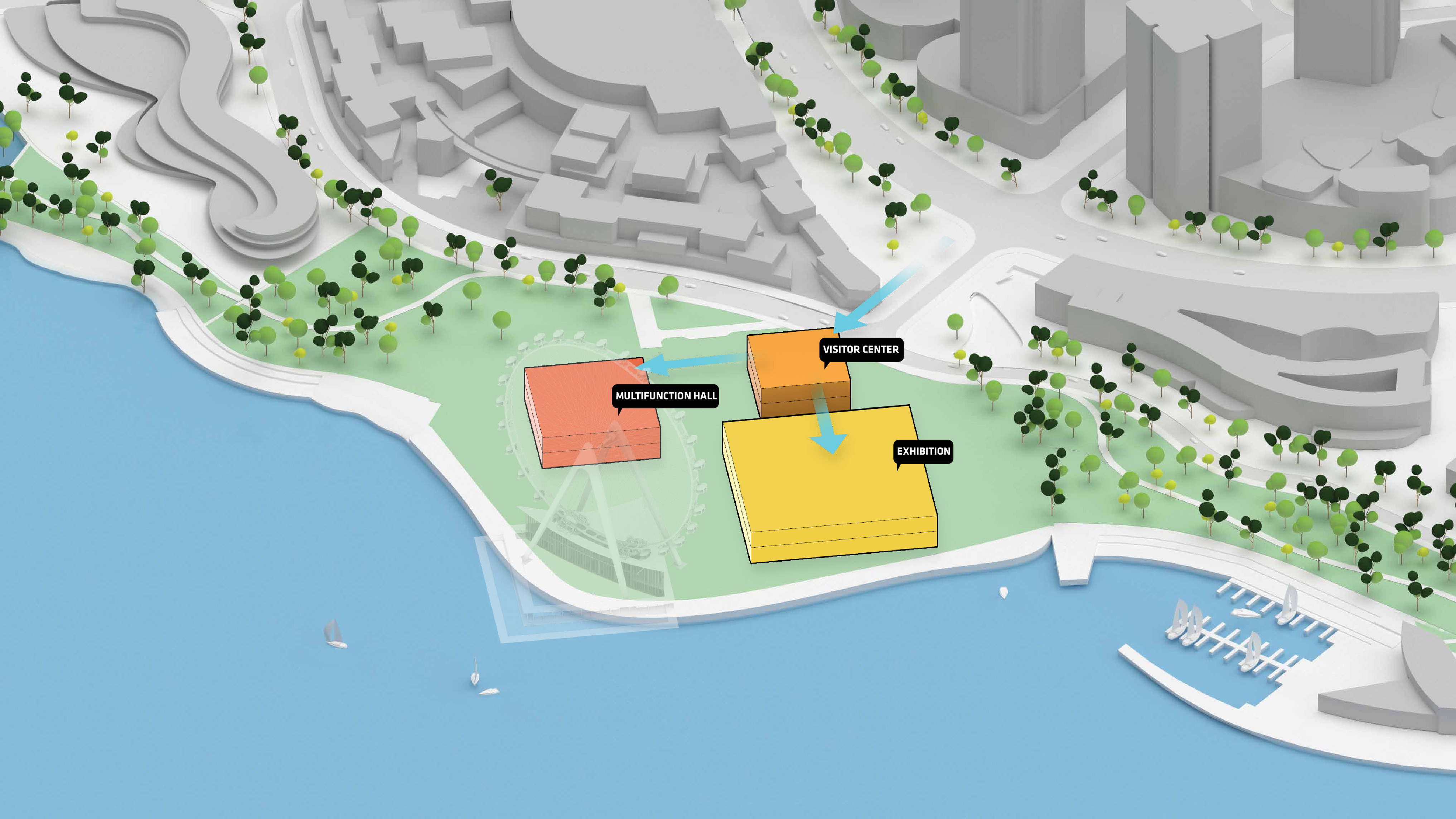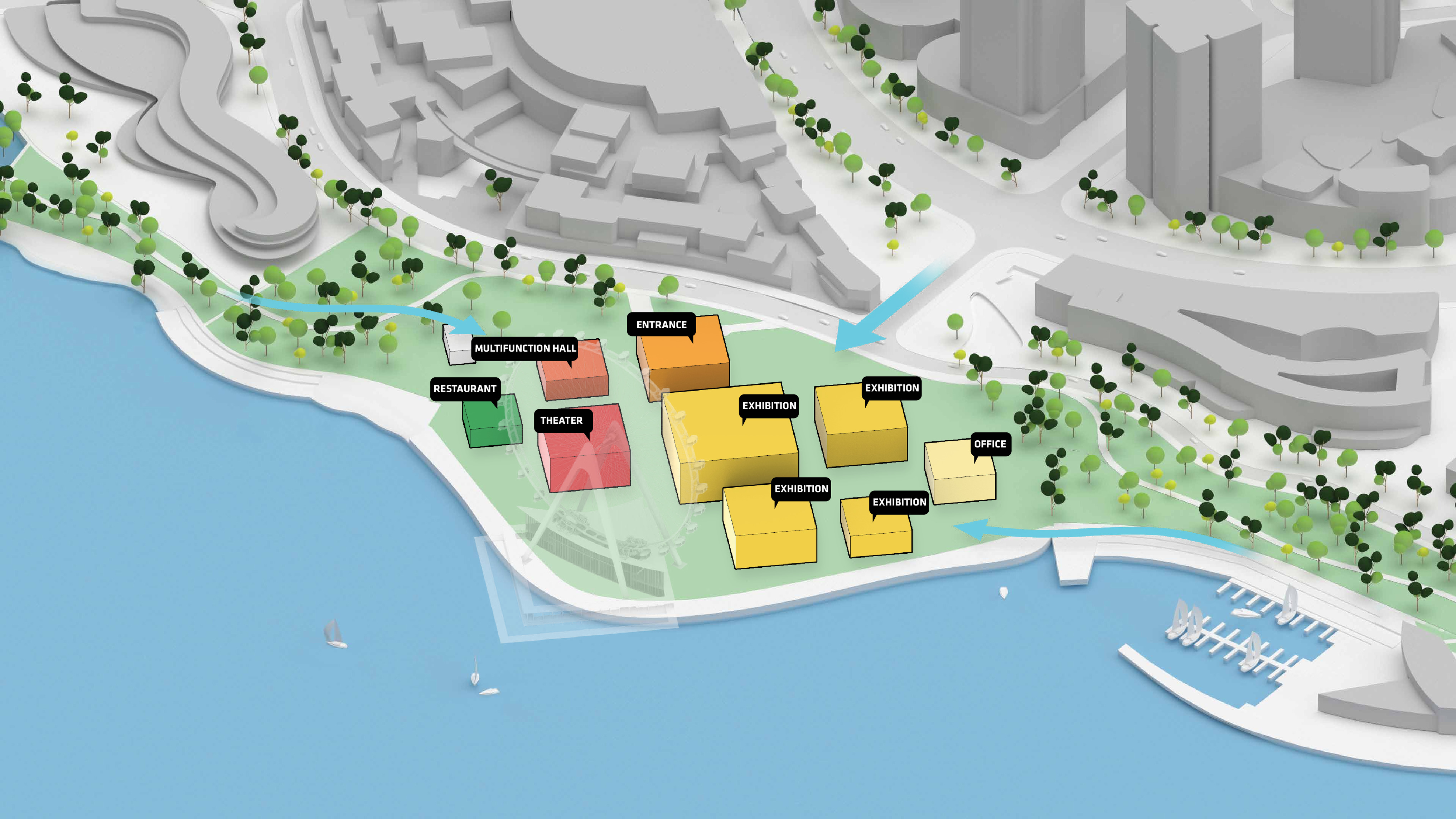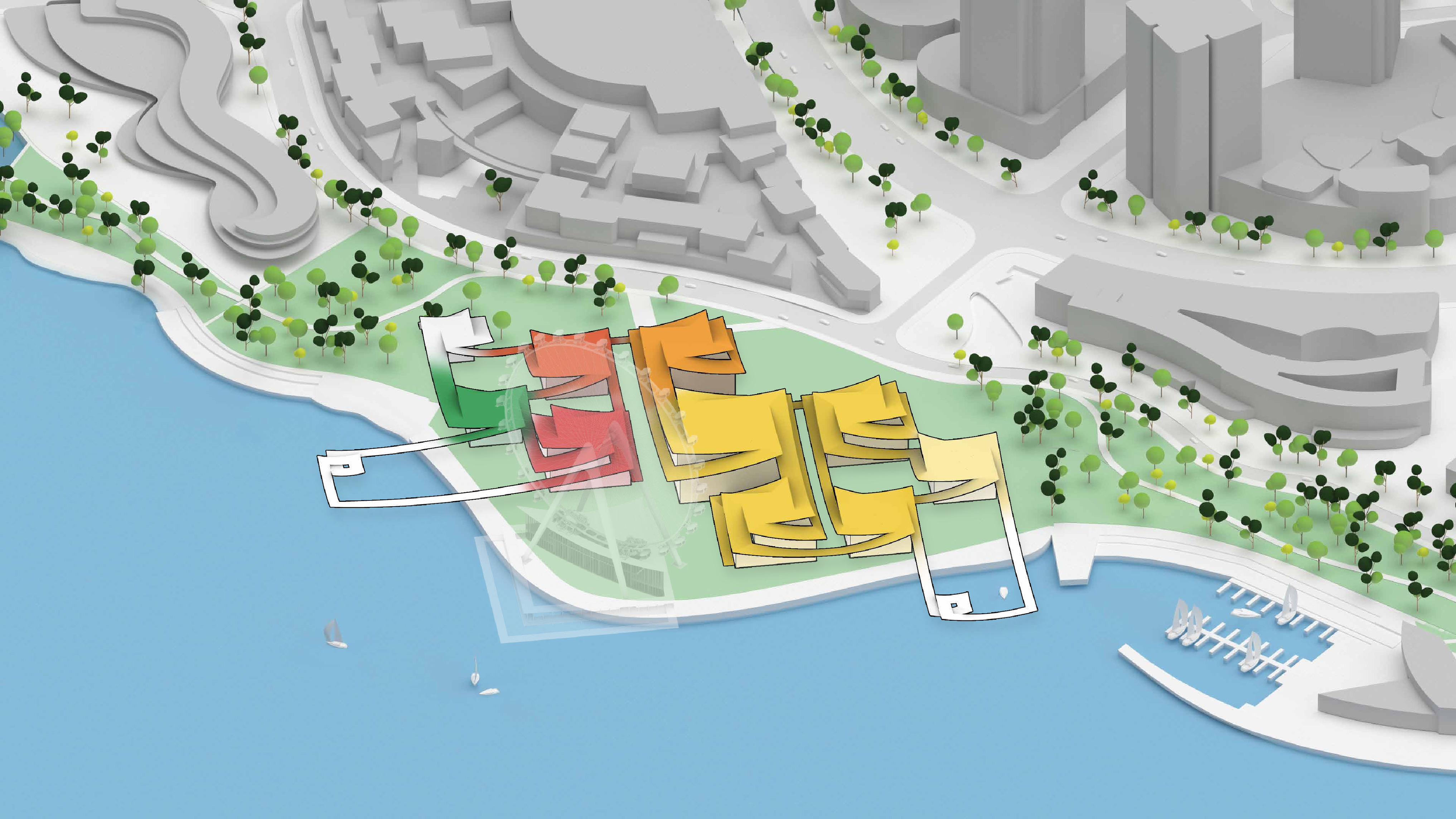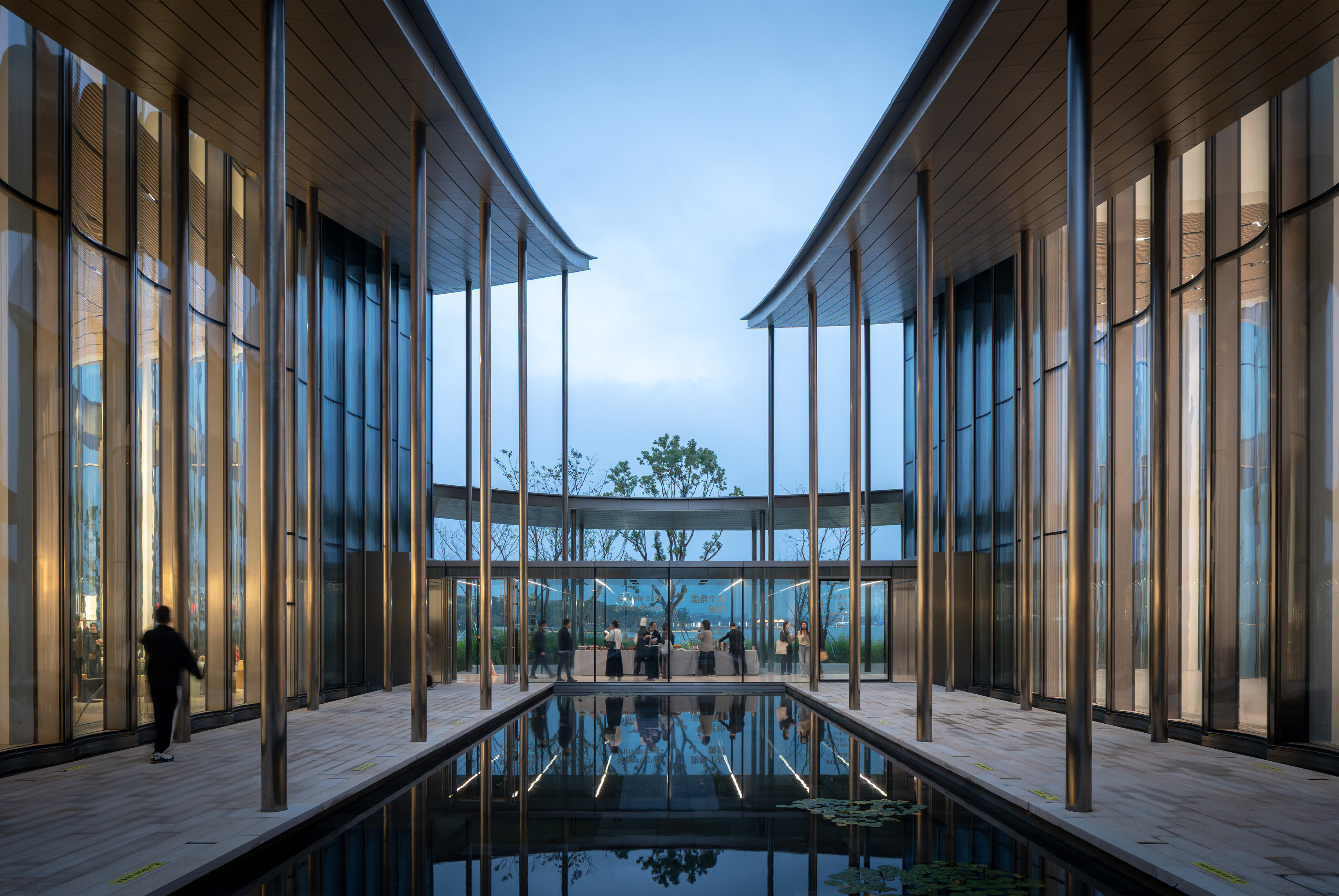STATUS
IN CONSTRUCTION
SUZHOU, CHINA
CLIENT
Suzhou Harmony Development Group Co. Ltd
TYPOLOGY
Culture
SIZE M2/FT2
60,000 / 646,000
STATUS
IN CONSTRUCTION
SHARE
Located on Jinji Lake, the 60,000-m2 Suzhou Museum of Contemporary Art offers a modern interpretation of the garden elements that have defined Suzhou’s urbanism, architecture, and landscape for centuries. The museum – commissioned by Suzhou Harmony Development Group and designed in collaboration with ARTS Group and Front Inc. – will officially open its doors to the public in 2026, becoming a new venue for contemporary art, design, and public life in China.
Conceived as a reimagination of the traditional garden ‘lang’ 廊 – a long, covered corridor that traces a path – 12 interconnected pavilions are unified beneath a continuous, ribbon-like roof whose gentle undulations recall the silhouette of tiled eaves.
Clad in rippled and curved glass and warm-toned stainless steel, the façades reflect the surrounding sky, water, and gardens – blurring the boundaries between architecture and the natural environment. The pavilions are connected above and underground via bridges and tunnels, offering the museum flexibility to manage circulation according to seasons and exhibitions. Together, the rooms frame a sequence of gardens and courtyards, guiding visitors on a journey that intertwines art, history, nature, and water.
"Suzhou is the cradle of the Chinese garden. Our design for the Suzhou Museum of Contemporary Art is conceived as a garden of pavilions and courtyards. Individual pavilions are woven together by glazed galleries and porticoes, creating a Chinese knot of interconnected sculpture courtyards and exhibition spaces. Weaving between the legs of the Ferris wheel, the museum branches out like a rhizome, connecting the city to the lake. The result is a manmade maze of plants and artworks to get lost within. Its nodular logic only becomes distinctly discernible when seen from the gondolas above. Against the open space of the lake, the gentle conical curvature of the roofs forms a graceful silhouette on the waterfront. From above, the stainless roof tiles form a true fifth facade."
Arriving at the museum, visitors are met by an expansive, welcoming plaza in front of the Visitor Centre and main entrance. From here, museumgoers can proceed inside or explore the grounds, meandering along the walkways that extend out into Jinji Lake.
Inside, natural light enters through clerestories and skylights, animating the galleries with a play of shadow and reflection.
Four of the museum’s pavilions comprise the main gallery experience, while the remaining pavilions include a grand entrance space, multifunction hall, theater, and restaurant. A continuous path guides visitors through the museum, branching off into smaller routes between the galleries.
The landscape design creates a welcoming public space along Jinji Lake through a series of interconnected gardens. As visitors approach the waterfront, the gardens gradually transition from hardscape to greenery to finally water-themed plantings, reflecting a natural progression from museum to land to lake. Sculptures by contemporary artists offer Suzhou’s citizens a cultural experience outside the museum’s opening hours.
The Suzhou Museum of Contemporary Art Museum follows the Chinese sustainability certification, GBEL Green Star 2, including both technical and social approaches to sustainability.
The Suzhou Museum of Contemporary Art is a tribute to the rich garden heritage of Suzhou. We envision the '廊,' a traditional element of Suzhou gardens, gracefully winding through the landscapes and transforming into pavilions. In doing so, it frames the contemporary gardens, making them an integral part of the exhibition, as significant as the artwork within.
The Suzhou Museum of Contemporary Art was recognized as a national landmark in China in June 2024, when it was featured on an official postage stamp issued by China Post to celebrate the successful development of Suzhou Industrial Park and the urban landscape around Jinji Lake.
Bjarke Ingels Finn Nørkjær Catherine Huang Ole Elkjær-Larsen Haochen Yu Zhonghan Huang Aileen Koh Amanda Lima Soares Da Cunha Andrea Hektor Athena Morella Bjarke Koch-Ørvad Christian Vang Madsen Eddie Can Eric Li Filip Fot Cris Guoyu Liu Molly Hsiao Rou Huang Izabella Banas Jakub Kulisa Jan Magasanik Jonathan Russell Kekoa Charlot Mathis Paul Gebauer Matteo Pavanello Miles Treacy Paula Domka Shu Du Tyrone Cobcroft Xavier Thanki Andreas Bak Narisara Ladawal Schröder Maria Capuozzo Federico Martínez De Sola Monereo Filippo Cartapani Yihan Liu Yanis Amasri Sierra Alicia De Nobrega Desislava Georgieva Zuzana Faskova Tim Christensen Julia Wilkosz Will Chuanrui Yu Riad Tabbara Phoebe Cowen Cristina Minguela Oliver Steen Paola Yepes Bocanegra Jiawen Huang Jurica Pajic Alexander Gale Heiede Janis Bronka Konstantinos Koutsoupakis Thomas Lejeune Tseng-Hsuan Wei Adele Scampoli Romain Thijsen Yingying Guan Ingrid Albina Oliva Lampa Chih-Han Chen Sol Anaid Chacon Levin Philip Kaefer Jana Semaan Megan Nhat Xuan Dang Pei Huang Jonathan Christian Chin Jens Max Jensen Jesús Fernández Fraile Huiyao Fu Kannan Selvaraj Tarek Shater Arda Çinçin Zahra Khademi Tomasz Jakubowski Jason Cheuk Hei Lee Pauline Rytter Todor Todorov Rusev Jiaqi Yang
MIPIM Asia, Best Cultural, Sports and Education Project, Silver, 2025
ARTS Group Co. Ltd. [中衡设计集团股份有限公司]
VIA.inc
Shanghai Shuishi Landscape Design Co. Ltd. [上海水石景观环境设计有限公司]
Rdesign International Lighting [上海瑞逸环境设计有限公司]
BIG Landscape
BIG Engineering
